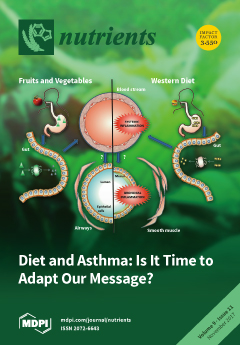Prediabetes can be defined by the presence of impaired fasting glucose (IFG) and/or impaired glucose tolerance (IGT), or glycated haemoglobin (Hb
A1c) to identify individuals at increased risk of developing type 2 diabetes (T2D). The World Health Organization (WHO, 1999) and the
[...] Read more.
Prediabetes can be defined by the presence of impaired fasting glucose (IFG) and/or impaired glucose tolerance (IGT), or glycated haemoglobin (Hb
A1c) to identify individuals at increased risk of developing type 2 diabetes (T2D). The World Health Organization (WHO, 1999) and the American Diabetes Association (ADA, 2003) utilise different cut-off values for IFG (WHO: 6.1–6.9 mmol/L; ADA: 5.6–6.9 mmol/L) but the same cut-off values for IGT (7.8–11.0 mmol/L). This review investigates whether there are differences in prevalence of IFG, IGT, and combined IFG&IGT between ethnicities, in particular Asian Chinese and European Caucasians. In total, we identified 19 studies using the WHO
1999 classification, for which the average proportional prevalence for isolated (i)-IFG, i-IGT, and combined IFG&IGT were 43.9%, 41.0%, and 13.5%, respectively, for Caucasian and 29.2%, 49.4%, and 18.2%, respectively, for Asian. For the 14 studies using ADA
2003 classification, the average proportional i-IFG, i-IGT, and combined IFG&IGT prevalences were 58.0%, 20.3%, and 19.8%, respectively, for Caucasian; 48.1%, 27.7%, and 20.5%, respectively, for Asian. Whilst not statistically different, there may be clinically relevant differences in the two populations, with our observations for both classifications indicating that prevalence of i-IFG is higher in Caucasian cohorts whilst i-IGT and combined IFG&IGT are both higher in Asian cohorts.
Full article






